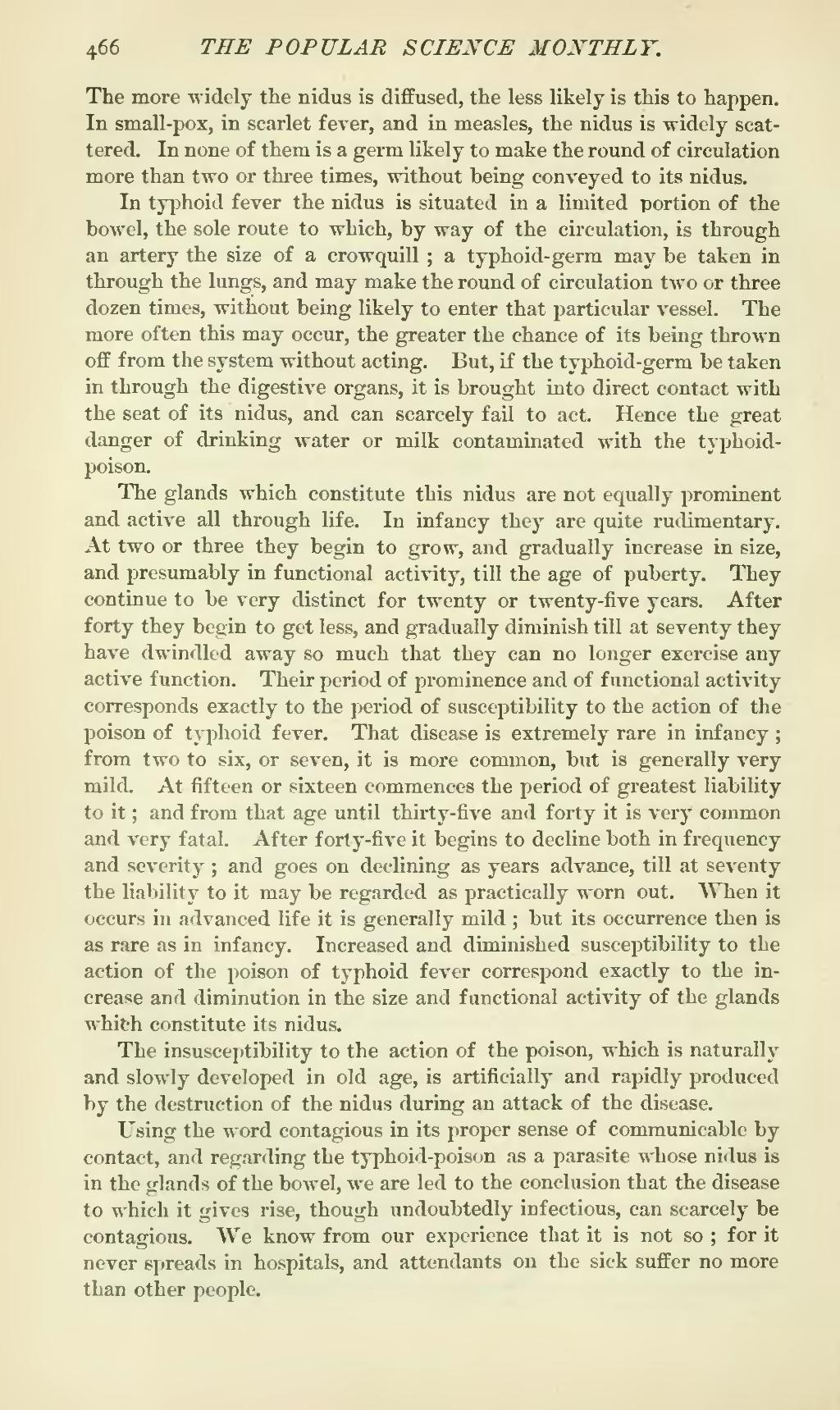The more widely the nidus is diffused, the less likely is this to happen. In small-pox, in scarlet fever, and in measles, the nidus is widely scattered. In none of them is a germ likely to make the round of circulation more than two or three times, without being conveyed to its nidus.
In typhoid fever the nidus is situated in a limited portion of the bowel, the sole route to which, by way of the circulation, is through an artery the size of a crowquill; a typhoid-germ may be taken in through the lungs, and may make the round of circulation two or three dozen times, without being likely to enter that particular vessel. The more often this may occur, the greater the chance of its being thrown off from the system without acting. But, if the typhoid-germ be taken in through the digestive organs, it is brought into direct contact with the seat of its nidus, and can scarcely fail to act. Hence the great danger of drinking water or milk contaminated with the typhoid poison.
The glands which constitute this nidus are not equally prominent and active all through life. In infancy they are quite rudimentary. At two or three they begin to grow, and gradually increase in size, and presumably in functional activity, till the age of puberty. They continue to be very distinct for twenty or twenty-five years. After forty they begin to get less, and gradually diminish till at seventy they have dwindled away so much that they can no longer exercise any active function. Their period of prominence and of functional activity corresponds exactly to the period of susceptibility to the action of the poison of typhoid fever. That disease is extremely rare in infancy; from two to six, or seven, it is more common, but is generally very mild. At fifteen or sixteen commences the period of greatest liability to it; and from that age until thirty-five and forty it is very common and very fatal. After forty-five it begins to decline both in frequency and severity; and goes on declining as years advance, till at seventy the liability to it may be regarded as practically worn out. When it occurs in advanced life it is generally mild; but its occurrence then is as rare as in infancy. Increased and diminished susceptibility to the action of the poison of typhoid fever correspond exactly to the increase and diminution in the size and functional activity of the glands which constitute its nidus.
The insusceptibility to the action of the poison, which is naturally and slowly developed in old age, is artificially and rapidly produced by the destruction of the nidus during an attack of the disease.
Using the word contagious in its proper sense of communicable by contact, and regarding the typhoid-poison as a parasite whose nidus is in the glands of the bowel, we are led to the conclusion that the disease to which it gives rise, though undoubtedly infectious, can scarcely be contagious. We know from our experience that it is not so; for it never spreads in hospitals, and attendants on the sick suffer no more than other people.

